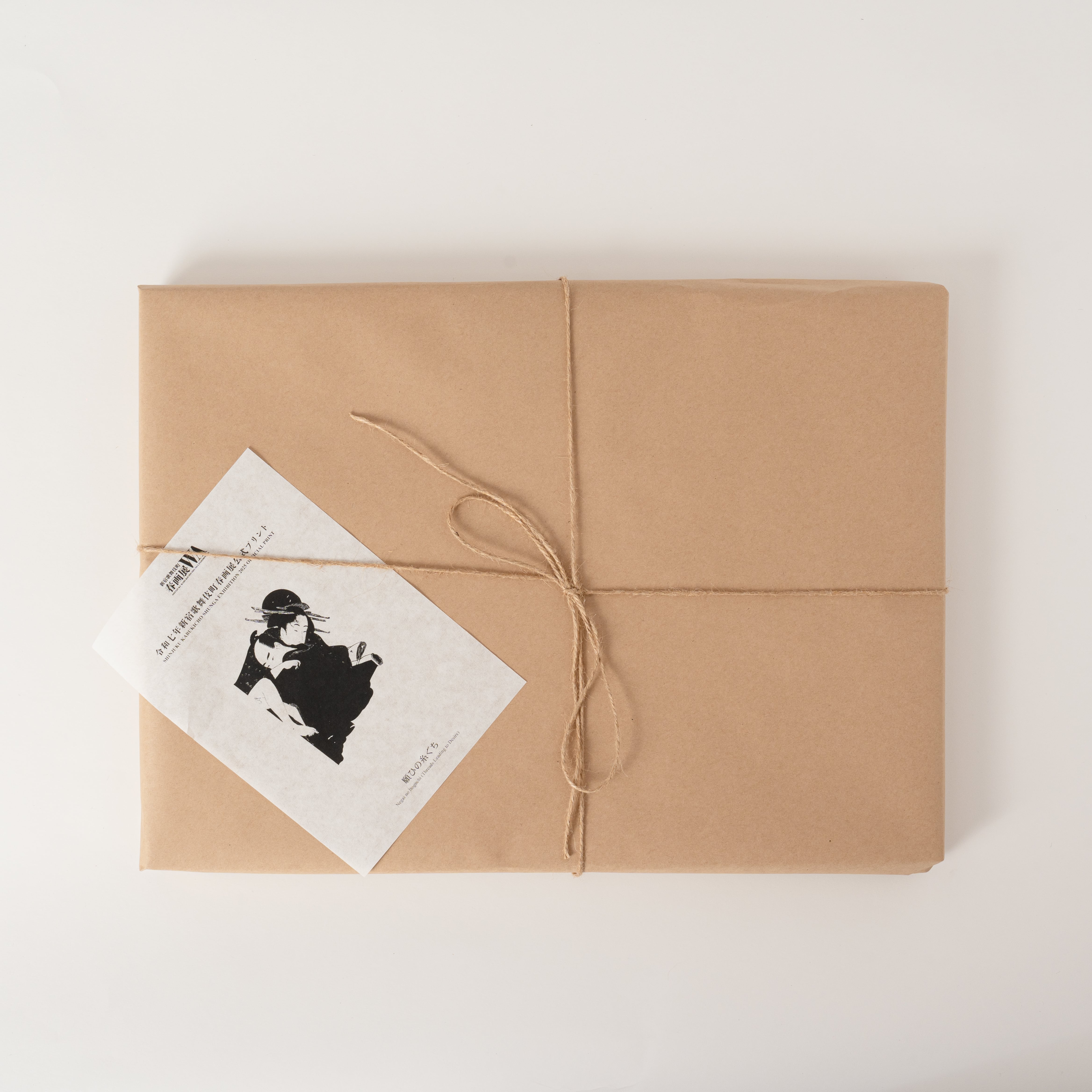

複製画【喜多川歌麿『願ひの糸ぐち』/大判錦絵/ 寛政11年(1799))】より Reproduction Print – From Kitagawa Utamaro’s “Negai no Itoguchi” / Large-Format Nishiki-e / Kansei 11 (1799)
¥33,000 税込
なら 手数料無料で 月々¥11,000から
別途送料がかかります。送料を確認する
春画を含め、美人画を描かせたら右に出る者がいないと言われる喜多川歌麿。女性の容姿だけでなく、内面を描くことにも長け、春画においても性愛の機微を描くことに成功をしている。『願ひの糸っぐち』は『歌まくら』につぐ歌麿の春画組物の名品。男も女も自身の欲望をあからさまに口にしている書入れが特徴で、江戸の人々のおおらかな性意識や性愛の捉え方がみて取れる。
「新宿歌舞伎町春画展」のメインヴィジュアルである本図は、呼び出しを受けた深川の遊女が、客が待つ茶屋へ向かう直前、間夫(まぶ)と慌ただしくひとときを過ごしている情景が描かれている。間夫とはつまり、、置屋の自室でつまり商売抜きで心を通わせる、恋人のような存在。男は余裕を見せているが、女には立ち去る時間が刻一刻と迫っており、ゆっくりと情を交わす余裕はない。
サイズ
A3
H31.8cm × W44.1cm
Kitagawa Utamaro is said to have been unrivaled when it came to depicting beautiful women, including in shunga. He excelled not only in portraying female appearance but also in capturing their inner character, and in his erotic works, he successfully conveyed the subtleties of love and desire. Negai no Itoguchi is one of Utamaro’s finest shunga series, following Uta Makura. A notable feature is the inscriptions in which both men and women openly express their desires, reflecting the open-minded attitudes toward sexuality and eroticism in Edo Japan.
This piece, featured as the main visual of the “Shinjuku Kabukicho Shunga Exhibition,” depicts a moment in which a courtesan from Fukagawa, summoned for a client, spends a brief and hurried intimate encounter with her lover (mabu) just before heading to the teahouse where her client awaits. The mabu was essentially a romantic companion with whom the courtesan shared private, non-commercial affection in her room. While the man appears relaxed, the woman is pressed for time and cannot leisurely indulge in intimacy.
Size
A3: H31.8 cm × W44.1 cm
-
送料・配送方法について
-
お支払い方法について




















